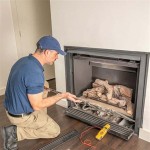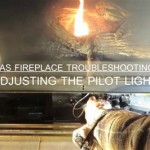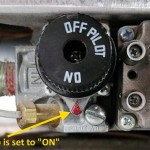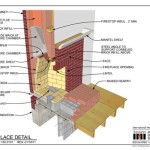Radiant Heat Wood Burning Fireplace: A Guide to Warmth and Comfort
A wood-burning fireplace is a cherished feature in many homes, offering warmth, ambiance, and a cozy atmosphere. Among the different types of fireplaces, those utilizing radiant heat are particularly popular. This article delves into the workings of radiant heat wood-burning fireplaces, exploring their advantages, disadvantages, and essential considerations for those considering installing them.
How Radiant Heat Fireplaces Work
Radiant heat fireplaces generate warmth through a process known as radiation. The flames within the firebox heat the surrounding materials, primarily the fireplace's interior and the masonry surrounding it. These heated materials then emit infrared radiation, which travels directly to objects and people in the room, warming them without significantly heating the air. In contrast to convection heating systems that rely on circulating warm air, radiant heat fireplaces warm people and objects directly, creating a more localized and comfortable warmth.
Advantages of Radiant Heat Fireplaces
Radiant heat fireplaces offer numerous advantages over conventional heating systems, making them a desirable choice for many homeowners. Here are some of the key benefits:
Comfort and Efficiency
Radiant heat is generally considered to be more comfortable than convection heating. As it warms objects directly, it creates a more even and consistent warmth throughout the space. Additionally, radiant heat fireplaces can be more energy-efficient than other heating methods, as they directly heat the objects and people in the room without heating a broader area, leading to less energy waste.
Aesthetic Appeal and Ambiance
Wood-burning fireplaces are renowned for their aesthetic appeal and ability to create a warm and inviting atmosphere. The flickering flames, crackling sounds, and soft glow of the fire provide a visual and auditory experience that can enhance the overall ambiance of a space.
Environmental Benefits
While wood burning does release emissions, using sustainably sourced and properly seasoned firewood can minimize its environmental impact. When compared to fossil fuel-based heating systems, wood-burning fireplaces can be a more eco-friendly option, especially in areas with abundant forest resources.
Disadvantages of Radiant Heat Fireplaces
Despite their many advantages, radiant heat fireplaces also have some potential drawbacks that prospective buyers should consider:
Installation Cost and Labor
Installing a radiant heat fireplace can be a significant investment. The costs can vary depending on the size and complexity of the fireplace, as well as the required labor and materials. Additionally, some installations may require modifications to existing structures, adding to the overall expense.
Maintenance and Cleaning
Wood-burning fireplaces require regular maintenance and cleaning. This includes removing ash, ensuring proper ventilation, and inspecting for any potential damage. Neglecting maintenance can lead to safety hazards and reduce the fireplace's efficiency.
Safety Considerations
Like any heating system, safety is a critical concern with wood-burning fireplaces. Proper installation, ventilation, and operation are crucial to prevent fires and carbon monoxide poisoning. It is essential to follow manufacturer instructions, ensure appropriate clearances, and have the fireplace inspected and maintained regularly.
Key Considerations for Choosing a Radiant Heat Fireplace
When considering a radiant heat wood-burning fireplace, several factors require careful evaluation:
Size and Design
The size and design of the fireplace should be appropriate for the space it will occupy. Consider the room's dimensions and desired heating capacity. Different designs offer various visual aesthetics, including traditional, modern, and contemporary styles.
Fuel Efficiency
Fireplaces with higher fuel efficiency generate more heat from the same amount of wood, reducing fuel consumption and minimizing environmental impact. Look for models with features like sealed combustion systems and efficient burn chambers to maximize heating output.
Ventilation and Safety Features
Proper ventilation is essential for a safe and efficient fireplace. Ensure the fireplace has adequate venting to prevent smoke and carbon monoxide buildup. Seek models with safety features like spark arrestors, overheat protection, and safety screens to minimize fire hazards.
Radiant heat wood-burning fireplaces offer a unique blend of warmth, comfort, and aesthetic appeal. By carefully considering the advantages, disadvantages, and key considerations discussed above, homeowners can make an informed decision regarding the suitability of this type of heating system for their individual needs and preferences.

Radiant Or Convection Heat Here S What You Should Know

Choosing Your Wood Stove Convection Vs Radiant Rockford Chimney

42 Biltmore Radiant Wood Burning Fireplace Traditional Liner Majestic

Heatilator Birmingham 36 Traditional Radiant Heat Wood Burning Firepl Us Fireplace

Sovereign Wood Burning Fireplace By Majestic Fireplaces At Fireplacepro

Radiant And Convection Heat Metro Fires

What Is The Difference Between Radiant And Convection Heat

Radiant Or Convection Heat Here S What You Should Know

Heatilator Element 42 Traditional Uninsulated Radiant Heat Wood Burni Us Fireplace

7 Wood Burning Fireplace Options To Heat Your Home
Related Posts








